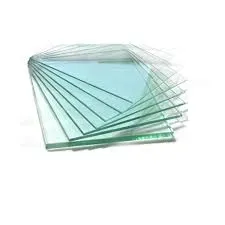The Beauty and Significance of Decorative Stained Glass
Stained glass, an art form dating back centuries, continues to captivate people with its intricate designs and vibrant colors. Often associated with cathedrals and historical buildings, decorative stained glass transcends mere functionality; it tells stories, enhances architectural beauty, and evokes emotional responses. This timeless craft merges artistry with craftsmanship, making it an enduring medium in both religious and secular settings.
Historically, stained glass was primarily utilized in churches and cathedrals to depict biblical narratives, saints, and scenes from the life of Christ. The light filtering through these colored panels transformed spaces, creating an ethereal atmosphere that inspired reverence and contemplation. In the Middle Ages, these works not only served aesthetic purposes but also educated the largely illiterate population about religious stories and moral lessons. Iconic examples such as the Rose Window of Notre-Dame Cathedral or the breathtaking stained glass of Chartres Cathedral showcase the skill and devotion of artisans who dedicated their lives to this craft.
Beyond religious contexts, decorative stained glass has found its way into modern architecture and design. Today, artists experiment with various styles, incorporating abstract patterns, nature motifs, and even contemporary themes. Stained glass is not limited to grand structures; it also enhances homes, offices, and public spaces, providing splashes of color and light. From window panels and door inserts to room dividers and skylights, the versatility of stained glass allows it to blend harmoniously with diverse interior styles.
decorative stained glass
The techniques involved in creating stained glass are both traditional and innovative. Artisans select colored glass sheets, which are then cut, shaped, and assembled using lead came or copper foil. The glass can be painted, etched, or sandblasted to achieve various effects. When light passes through the glass, it creates a dynamic interplay of colors and patterns, constantly changing throughout the day as the sun moves. This interaction with light not only enhances aesthetic appeal but also serves as a reminder of the beauty and transience of life.
Moreover, the emotional resonance of stained glass cannot be overlooked. The enchanting colors evoke memories, inspire creativity, and invite reflection. They create focal points that draw people in, encouraging them to pause and appreciate their surroundings. In many ways, decorative stained glass acts as a bridge between the physical and spiritual realms, inviting contemplation and a sense of connection to something greater.
In conclusion, decorative stained glass is more than just a visual delight; it embodies history, artistry, and personal expression. As it continues to evolve, this beautiful art form remains a significant aspect of our cultural heritage, touching lives in countless ways. Whether in a cathedral or a contemporary home, stained glass remains a powerful symbol of creativity and human endeavor.
 Afrikaans
Afrikaans  Albanian
Albanian  Amharic
Amharic  Arabic
Arabic  Armenian
Armenian  Azerbaijani
Azerbaijani  Basque
Basque  Belarusian
Belarusian  Bengali
Bengali  Bosnian
Bosnian  Bulgarian
Bulgarian  Catalan
Catalan  Cebuano
Cebuano  Corsican
Corsican  Croatian
Croatian  Czech
Czech  Danish
Danish  Dutch
Dutch  English
English  Esperanto
Esperanto  Estonian
Estonian  Finnish
Finnish  French
French  Frisian
Frisian  Galician
Galician  Georgian
Georgian  German
German  Greek
Greek  Gujarati
Gujarati  Haitian Creole
Haitian Creole  hausa
hausa  hawaiian
hawaiian  Hebrew
Hebrew  Hindi
Hindi  Miao
Miao  Hungarian
Hungarian  Icelandic
Icelandic  igbo
igbo  Indonesian
Indonesian  irish
irish  Italian
Italian  Japanese
Japanese  Javanese
Javanese  Kannada
Kannada  kazakh
kazakh  Khmer
Khmer  Rwandese
Rwandese  Korean
Korean  Kurdish
Kurdish  Kyrgyz
Kyrgyz  Lao
Lao  Latin
Latin  Latvian
Latvian  Lithuanian
Lithuanian  Luxembourgish
Luxembourgish  Macedonian
Macedonian  Malgashi
Malgashi  Malay
Malay  Malayalam
Malayalam  Maltese
Maltese  Maori
Maori  Marathi
Marathi  Mongolian
Mongolian  Myanmar
Myanmar  Nepali
Nepali  Norwegian
Norwegian  Norwegian
Norwegian  Occitan
Occitan  Pashto
Pashto  Persian
Persian  Polish
Polish  Portuguese
Portuguese  Punjabi
Punjabi  Romanian
Romanian  Russian
Russian  Samoan
Samoan  Scottish Gaelic
Scottish Gaelic  Serbian
Serbian  Sesotho
Sesotho  Shona
Shona  Sindhi
Sindhi  Sinhala
Sinhala  Slovak
Slovak  Slovenian
Slovenian  Somali
Somali  Spanish
Spanish  Sundanese
Sundanese  Swahili
Swahili  Swedish
Swedish  Tagalog
Tagalog  Tajik
Tajik  Tamil
Tamil  Tatar
Tatar  Telugu
Telugu  Thai
Thai  Turkish
Turkish  Turkmen
Turkmen  Ukrainian
Ukrainian  Urdu
Urdu  Uighur
Uighur  Uzbek
Uzbek  Vietnamese
Vietnamese  Welsh
Welsh  Bantu
Bantu  Yiddish
Yiddish  Yoruba
Yoruba  Zulu
Zulu 

